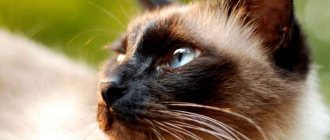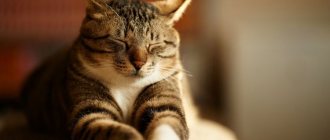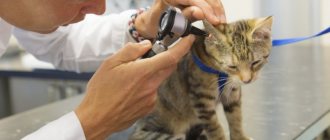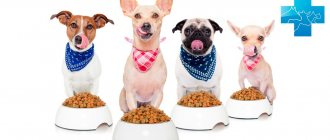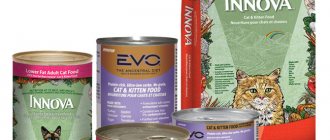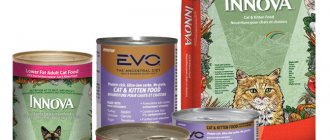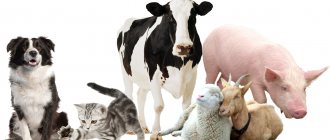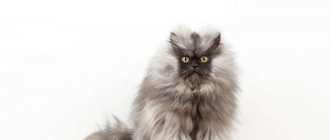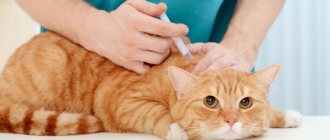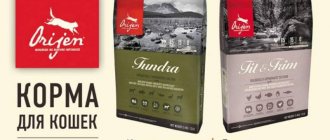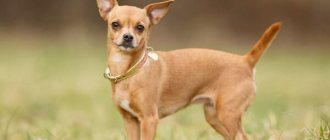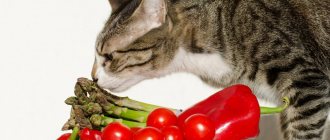In this article we will present the main differences between feed classes. Let's tell you what is better than premium food from economy. We will highlight a list of the best cat foods and also indicate their rating.
Variety of options
Pet stores offer a wide selection of diets - dry and wet, designed for different breeds and ages. However, given that not all manufacturers write explanations in Russian, the choice often becomes difficult.
Food can be homemade - prepared by the owner, or industrial - food for animals produced in factories.
They may differ:
- composition;
- consistency;
- application features.
The industrial category is divided into the following subtypes:
- dry;
- wet;
- canned.
They require separate consideration.
Economy class
Economy class food is characterized by a low meat content. It is replaced by various grains, offal and additives. The cat is less likely to eat this food, which means it requires much more of it. When purchasing economy-class food, pay attention to the composition, which should not contain various flavorings and preservatives. The price category is very low, about 20-30 rubles per bag, and a lot of money is spent on promoting the brand.
The most popular representatives of economy class food: Whiskas, Friskies, Kitekat. Veterinarians strongly discourage feeding cats such food on an ongoing basis.
Dry
This food is produced using complete dehydration of natural ingredients. The meat is supplemented with vegetables, cereals and legumes.
The composition depends on the product class and purpose.
This form of nutrition is used for the animal’s daily diet or when traveling, for example, to an exhibition. This is convenient: granules do not belong to the category of perishable goods.
They are also liked by cats, who can crunch them with pleasure, which helps cleanse their teeth of tartar and plaque.
Diet of a sterilized cat
If your pet is a sterilized cat, then its diet requires special attention. One of the most common problems of sterilized cats is the problem of excess weight, since food becomes the only pleasure in a cat’s life after such an operation.
The main task of the owner of a sterilized cat is to distract her from food and engage her in active games. If, even after an active life, the cat gains excess weight, it must be switched to a low-carbohydrate diet. The diet should definitely include milk porridge and fermented milk products, vegetables, poultry, beef, and offal. We strictly exclude fish from the diet of a sterilized cat, as it contains a large amount of phosphorus and magnesium.
If your cat ate ready-made food before sterilization, you should not change her diet. Except that you must purchase strictly food designed for sterilized cats. These are premium food brands such as Hill's, Royal Canin and Purina.
If you have questions about your pet's health or diet, you can always consult your veterinarian.
Wet
These include:
- meat;
- fish;
- bouillon.
Depending on the class, the protein component in it can be from 50% to 90%. The product is packaged in packs and undergoes heat treatment, as a result of which useful substances remain in the jelly.
Such food has an important positive aspect - a variety of tastes, thanks to which even the most capricious cat can eat what he likes.
They have a short shelf life: usually it is better not to leave them open for more than 12 hours. In addition, soft pieces are not able to remove tartar, so we are not talking about its prevention in this case either. As for the cost, good wet food is expensive: not every owner can afford to include it in the pet’s daily diet.
Types of ready-made feeds
Prepared cat foods are divided into three main types: dry food, wet food and canned food. Each type of feed has a certain value for the animal’s body.
Dry cat food
This food is the most popular and at the same time controversial food for cats. Until now, veterinarians cannot come to a consensus on the possibility of using dry food. Many people categorically do not accept it, but some, on the contrary, recommend its use.
Dry cat food is the most convenient, so to speak, cat food. You can pour it into a bowl and not worry about it disappearing or drying out. Dry food has a fairly affordable price. If you plan to feed your pet this type of food, you should purchase high-quality dry food. It is high-quality food that contains all the necessary substances for the cat’s body. In addition, dry cat food has a beneficial effect on their teeth.
High-quality dry cat food includes food from Natura Petfoods . These foods contain a low percentage of carbohydrates (7%) and a high percentage of protein (50%). This company produces brands such as EVO Turkey and Chicken Formula California Natural. Natura Petfoods foods contain chicken and turkey meat, rice, and chicken bone meal.
Of the cheaper dry foods, Natural Balance Ultra . The food is quite good and does not contain any preservatives. However, it should be noted that this food contains rapeseed oil, the benefits of which are controversial. Purina Cat Chow food also has a good composition. Consists of cornmeal and gluten, turkey or chicken by-products, beef fat and soybean meal.
Canned food for cats
This is the most favorite type of cat food among pets. There are a lot of varieties of canned food on the store shelf. Due to their relatively high price, these foods cannot be your pet's daily food.
Canned food for cats contains all the necessary components for complete nutrition of a pet, and is a real treat for them. The main advantages of canned food are sealed packaging and, of course, saving the cat owner’s precious time. Since canned food for cats is an excellent and worthy substitute for natural cat food.
Wet food
This is an average food between dry cat food and canned food. The nutritional value of these types of food is quite low, so they do not bring any benefit to the cat’s body. They contain a high content of soy protein and various chemical additives.
Wet food for cats looks like delicious meat or chicken pieces, which are covered in aromatic sauce. The food is packaged in portions, that is, one sachet of jelly is enough for approximately one feeding of the cat. Wet cat food is no less popular than canned food, which saves you time in preparing your cat's food.
The best quality wet food brands are Sheba, Hill's, Leonardo and Jams. From the cheaper ones, without worrying about the cat’s health, you can safely choose Zoogourman, Vaska or Four-Legged Gourmet.
There is also a black list of wet food . These foods, according to veterinarians, are not even worthy of attention. These are brands such as Whiskas, Darling, Gourmet, Kitekat, Mon Ami, Friskies, Edel Cat, as well as Oscar cat food.
When choosing food for your pet, do not forget that when using dry food every day, the cat’s diet should be diversified with other foods (canned food, wet or natural products) for the healthy and active development of your pet.
Classification
Cat food differs not only in composition, but also in quality. To determine it, the Fredalina scale was created, which takes into account the amount of natural components, as well as harmful and beneficial substances.
Calculation starts from 100 points. If the food contains by-products, then 10 points are deducted from it for each.
For example, if:
- the food contains vegetable pomace, which means minus 10 points;
- if in addition to the marc there is bone meal – minus 20 points;
- the composition is approved by a veterinarian, then for food it is +5 points;
- it contains vegetables and probiotics - additional +3 points.
Mr. Cat explains: what you need to know about the composition of food
When choosing food for your pet, you must follow the following rules:
- You should carefully read its composition on the packaging. The percentage of ingredients is indicated in descending order. If it is not there, then it is a product of the cheapest price category and low quality.
- The meat component is always indicated in the first line. If “dehydrogenated” is written next to it, then the numerical expression of the quantity is correct. If there is no such designation, then the meat in the mixture is contained in raw form and its true volume is three times less than the indicated figure. This is due to the evaporation of moisture during the feed manufacturing process.
- If it is indicated which type of meat contains the mixture, then this is a product of at least premium class.
- The lower the content of cereal crops in the mixture, the better. Predators, which are cats, have virtually no need for this component. If this component occupies the first line in the list, it is not worth purchasing such food - it will bring nothing but harm to the animal.
- It is advisable that rice, legumes, potatoes, and oats be used as plant crops. Wheat, soy, and corn often cause allergies in animals. It is preferable to contain fiber in a whole, rather than in the form of flour, state.
- It’s good if the composition of the by-products is indicated. If they contain liver, lungs, heart, tripe, this indicates an acceptable quality of the mixtures. With the general phrase “animal origin”, the feed definitely uses hooves, horns and other low-grade waste.
- The content of mixtures of fruits, vegetables, berries, probiotics, and prebiotics in whole form is encouraged.
- The indication “animal” or “poultry” fat in the dry mixture indicates its low quality. It is advisable that “chicken” or “fish” be written next to this component.
- A certificate and quality guarantee must always be present on super premium and holistic foods.
- If your pet suffers from urolithiasis, leads a sedentary lifestyle, is prone to overweight and obesity, and is neutered or sterilized, then it is better to purchase food from special therapeutic and preventive lines.
- For pregnant and lactating cats and kittens, you should choose only foods with high calorie content, preferably from a specialized line.
Cat food rating
In our rating, cat food is divided into 4 classes:
- Holistics. This is the best nutrition with a high percentage of natural products.
- Super premium. They are healthy and contain 80% natural products.
- Premium This food contains a high content of plant proteins and by-products.
- Economy These foods are chosen with care, ideally they should be purchased from trusted suppliers, as they can harm the animal.
Natural products as pet food
I would like to start with natural products, because they will bring great joy to your pet. It should be noted right away that feeding your pet natural products does not mean that you need to feed it from your common table. Dishes prepared for humans are strictly contraindicated for cats.
If you ask your veterinarian for advice on the best commercial food, he or she will undoubtedly recommend natural products. If you decide to feed your pet meals containing only natural products, you should remember that sometimes your pet will need mineral supplements and vitamins.
The main source of protein for the cat's body will be rabbit meat, veal and lamb. If you are planning to give your cat pork, you should remember that you should absolutely not give him fatty pork. In general, it is not advisable to give this meat to your pet, and it is best to reduce it to a minimum. If it is not very fatty, then initially it needs to be boiled in the same way as poultry meat. For example, turkey or chicken meat. Beef liver will provide your cat with a number of vitamins, such as A, B, D and H. It is also undesirable to give your pet raw fish; you risk getting helminths. It is best to pre-boil fish, like pork and poultry.
If you want to give your pet milk, remember that it is almost not absorbed by the cat’s body. It is best to give your cat regular water. But the best dairy products to give your pet are kefir, low-fat cheese, cottage cheese or sour cream. Be sure to supplement all natural animal foods with grains and vegetables. From cereals, you can choose oatmeal, semolina, rice or corn, and from vegetables, carrots, various greens and cauliflower will be useful. Cereals and vegetables are pre-boiled, and then they are simply blended and added to the animal’s feed.
Super premium food
The most famous super-premium manufacturers
Food in this category is mainly used by breeders and owners of show cats. These feeds contain the entire complex of proteins, fats and carbohydrates, as well as essential minerals, vitamins and amino acids in balanced quantities. Better quality cereal products are used. The animal assimilates almost 95% of the feed, which means it stays full longer and receives all the necessary nutrients in the right quantity.
Feed composition:
- more than half of meat and premium meat products;
- quality offal;
- There are no artificial colors, flavors, or flavor enhancers;
Manufacturers produce specialized food for the special needs of animals and for the prevention of various diseases. This category of food is sold in specialized stores and veterinary clinics. The price is quite high, but given the almost complete absorption of all nutrients by the animal, the amount of food will be significantly reduced.
Cat and vegetarian diet
Doctors do not recommend giving your pet a vegetarian product. The cat is a carnivore. It needs substances that it extracts only from meat - taurine, niacin, vitamins A and B12, anachidonic acid. He cannot extract these substances from plant foods in the required quantities.
If you only buy him vegetarian food, it will be bad for his health. Most recipes are not well thought out or are focused on averages, while each pet requires an individual approach.
General recommendations for choosing food:
- When purchasing food, pay attention to the percentage of meat/by-products. In economy food it is significantly lower than in super-premium and holistic class. In a good food, the percentage of meat should be in the range of 30-45%, so if the packaging says that the content is 100%, then most likely this is just an advertising ploy and you should carefully read the composition.
- The food should not contain various harmful additives (dyes, additives with the prefix E), as well as salt, yeast, and animal mixtures. They can cause allergies and provoke various diseases. In addition, the signature “tasteful” can most often indicate the presence of harmful flavorings in the food. Also, in no case should the food contain the H127 dye, which can activate the growth of cancer cells.
- When choosing food, be sure to take into account the breed, age, health and physical activity of your pet. It is best to consult a veterinarian first to avoid problems caused by incorrect selection. Often certain breeds are prone to certain diseases. Of course, food alone cannot cure them, but it will help maintain health and not aggravate the condition.
We remind you that recommended feeding rates for cats depend on their age and weight:
Holistic feed category
The most famous manufacturers of the holistic class
Holistic means “whole”. Food in this category is made exclusively from natural ingredients and is 100% digestible by animals. The food is as close as possible to what the animal eats in the wild.
Feed composition:
- contains only meat from animals such as chicken, lamb, slaves and turkey;
- no by-products;
- natural additives are used: fatty acids Omega 3 and Omega 6;
- vegetables and fruits;
- vitamins and antioxidants, minerals;
- natural live probiotics and enzymes that improve digestion;
- without corn and wheat, but as cereals, white and brown rice are healthy for the animal.
Animals love the taste and smell of this food. It does not contain hormones, pesticides, flavoring additives, or artificial colors. All ingredients are used for the health of the animal, the beauty of its coat, physical energy and mood. The food is suitable for any age and breed of animal.
This category of feed is the most expensive. They are sold in specialized pet stores and veterinary clinics.
